Avast Antivirus is a family of cross-platform internet security applications developed by Avast for Microsoft Windows, macOS, Android and iOS. The Avast Antivirus products include freeware and paid versions that provide computer security, browser security, antivirus software, firewall, anti-phishing, antispyware, and anti-spam among other services.
Avast launched a freeware business product, Avast for Business, in February 2015. It is a cross-platform solution that includes antivirus protection, web threat scanning, browser protection, and a cloud management console.
As of 2017, Avast is the most popular antivirus vendor on the market, and it had the largest share of the market for antivirus applications.
In a February 2018, test of various antimalware products by AV-TEST, Avast Free Antivirus has earned 6 out of 6 points in "Protection" category, detecting 100% of malware samples used in this test and earning an "AV-TEST Certified" seal. Avast's Mobile Security & Antivirus app detected 100% of malware samples in January 2018 test of Android malware by AV-Comparatives.
In January of 2020, multiple news sources reported that Avast Antivirus, through a subsidiary, was selling the browsing history of Avast product users. Though the company claimed all data was "de-identified", it was reported that the sold data could be linked back to people's real identities, exposing every click and search they had made. In response, Avast announced that it would close the subsidiary over the data privacy backlash.
Avast went above and beyond when it came time to design the free version of their antivirus product. Even the basic virus scan offers more functionality than most. Instead of just searching for viruses and malware, it also detects out-of-date software, malicious browser add-ons, network issues, unprotected sensitive documents, and weak passwords.
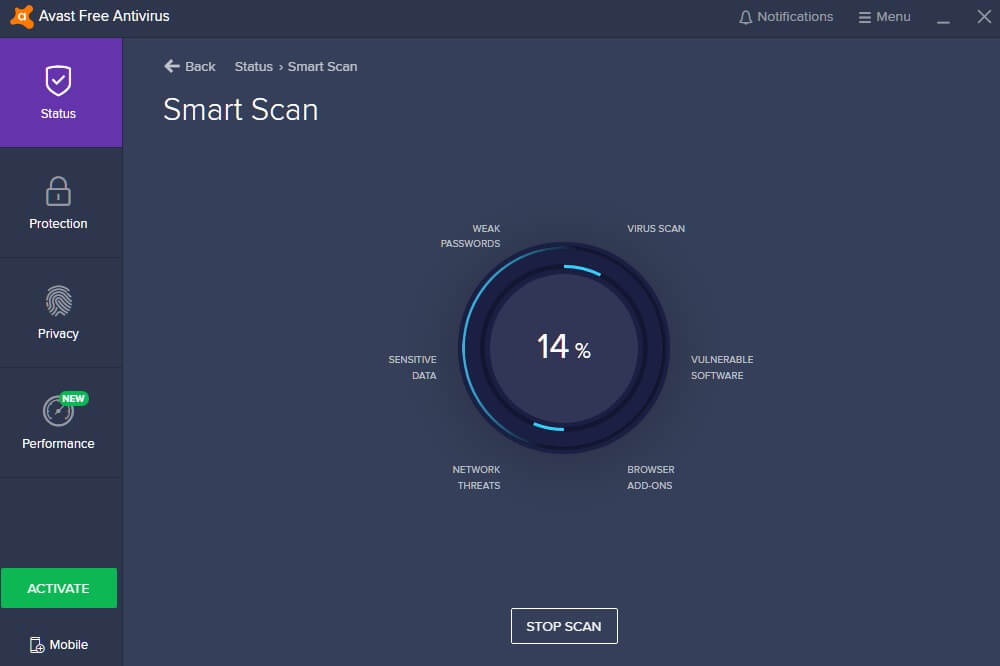
My first scan detected no malware, bad extensions, or network issues, but it did find vulnerable software, unprotected documents, and weak passwords. I’m not surprised that there’s vulnerable software on my computer – I have a lot of software and it’s a pain to update it all – but these last two items gave me a little bit of pause. What does Avast count as unprotected sensitive documents and how do they find them? Furthermore, how do they check the strength of my passwords?
As it turns out, the sensitive documents scan is highly effective. It found tax records, employment documents, financial statements, and more – stuff I’ve stored on my computer without even remembering that I’ve put it there. In all, it only detected two false positives. Avast sorted these documents into categories such as taxes, payroll, employment, and travel (documents such as driver’s licenses and passports. It also gives you an easy button to the right of each entry that instantly shows you the location of each document that it finds.
Reading between the lines of the marketing copy, Avast seems to be leveraging a technology known as Data Loss Prevention (DLP). DLP is a tool that’s normally used in the context of large companies that store customer data such as credit card and social security numbers. Using DLP, companies can scan word documents and conduct optical character recognition (OCR) on PDFs in order to detect strings of numbers that resemble these sensitive bits of data. The company can then know exactly where its sensitive data is and take steps to ensure that no one moves or deletes it.
Simply knowing the location of my sensitive data is very useful and seeing DLP technology move from a corporate to a consumer context is interesting to say the least. There’s unfortunately not a lot that you can do with this information without locking yourself into a subscription, however. Once you do subscribe, you get the option to encrypt your information and store it in a secure digital locker. If any attacker attempts to move or delete these files, the program blocks access and notifies the user.
Avast’s weak password scan is frankly a bit of a letdown. I was expecting the service to tell me that I’d set one of my passwords to “123cat” or something equally simple by using some sort of futuristic hash-scanning algorithm. Instead, it just told me that I’m storing passwords in my browser (everyone does), that this method is potentially insecure (jury’s out on that), and that I should upgrade in order to use Avast Passwords, Avast’s password management service. This may certainly be useful, but it’s not worth committing to a yearly subscription when you could just use one of the best password managers that are already available elsewhere. (More on this later.)
All of these extras are frankly a distraction from the core of the scan itself – the malware detector. Independent lab tests show that Avast has a highly-rated antivirus engine, demonstrating advanced features and flagging zero false positives. Few antivirus engines scored higher. In addition, testing-under real-world conditions shows that Avast is efficient at detecting and mitigating the vectors – such as drive-by-downloads and code injection attacks – by which malware propagates. To summarize, Avast will detect most forms of advanced malware, and prevent most of them from even installing on your computer. If any malware gets by, an automatic scan will usually detect and destroy the infection within a day.
When malware attempts to execute on a computer, Avast springs into action. It will detect most known malware samples immediately, then quarantine and delete them. If Avast detects an unknown file that acts suspiciously, Avast kills the process and analyzes the malware sample at its corporate headquarters. If you suspect that Avast has missed a file, you can right-click on any file in your Windows Explorer panel and select the file or folder for individual scanning.
More importantly, Avast is very good at making sure that malware doesn’t get onto your computer in the first place. It detects most sites that attempt to distribute malware before they start downloading onto your computer. For the rest, Avast will interrupt the malware sites during the download stage – missing only a few files, which will usually be caught by Avast’s active protection once they attempt to execute.
Phishing sites – sites that attempt to duplicate banking login screens and social media – are far more common than malware sites, as well as being a bit simpler to produce. It’s arguably more important to protect users from these sites than it is to protect them from sites dedicated to malware. Although this is a paid feature, Avast has the ability to protect users from phishing sites with surprising efficiency. Their software doesn’t just block sites that have already been blacklisted – they also can identify phishing sites that are too new to have been identified by security researchers.
To summarize, the free version of Avast offers security that’s among the best that I’ve ever seen. You’d almost expect that its designers would have turned something off to make the paid upgrade more essential, but they haven’t. Its paid features, including a locker for your passwords and an encryption option for sensitive files, just don’t add more to the table.
Outside of the core antivirus function, Avast offers a host of features in both its free and paid versions that are designed to keep your data secure. These features range from the expected to the exotic, with many of the paid features being perhaps more useful to power users. Here’s the rundown:
First of all, Avast offers a series of advanced security scans. This is distinct from the “Smart Scan” that you see on the program’s main menu. When you click on the “protection” tab, you’ll see a variety of options, including “Full Virus Scan” and “Boot-Time Scan.”
Full Virus Scan is both slower and more thorough than the primary smart scan. Although it takes quite a bit longer – up to a couple of hours on a slower machine – it has a better chance of detecting and resolving threats. If you suspect that your computer was infected by malware prior to installing Avast, you’ll likely want to do a Full Virus Scan in order to weed out any lingering threats.
You’ll also want to run a Boot Time Scan. Many advanced kinds of malware now have the ability to persist even when their files are deleted from your computer’s operating system. That’s because these viruses exist outside the primary OS. When they’re deleted, they simply reinstall themselves from files that are outside the operating system. A Boot Time Scan restarts your computer and watches for suspicious programs that try to execute while the computer is running, and then stops them in their tracks.
Lastly, Avast offers a full-featured WiFi scanner designed to protect you at your home and on the go. When I ran it, it discovered every device connected to my WiFi in under a minute – my desktop, laptop, console, cellphone, and kitchen speaker. If my devices were unsecured, it would have pointed out vulnerabilities such as ports exposed to the internet, default passwords, and other weaknesses.
Outside of these advanced virus scanning features, Avast doesn’t offer much – but it’s not clear that you’d need much more anyway. For example, there’s a utility that’s supposed to clean your computer’s hard drive, for example, but it’s paid for. Meanwhile, CCleaner is free. Want to get rid of particularly sensitive materials? Avast offers a secure erase function that can delete a file by writing over it many times, removing all trace of it from your computer. The system works as advertised, but it’s hard to see who needs it other than security researchers. There’s a VPN add-on that you can pay for, but other standalone VPNs offer similar features for less.
To summarize, Avast has won me over with its free version, but it has lost its balance when it comes to paid and premium pricing. The features here won’t make you much more secure than the free software, and you can replicate most of their functionality with free or lower-cost third party software.
This is an area where Avast frustrated me. I realize that if you’re an antivirus company, you need to make money by converting your free users to paid subscribers. I really shouldn’t mind that Avast takes every opportunity to get me to upsell – and for the most part, I don’t. What irks me, however, is the liberal use of dark-pattern UI in order to get me to pay up.
If you’re unfamiliar with dark-pattern UI, here’s a quick example.
When you boot up Avast, you get a splash screen a big “scan now” button in the middle and a white box offering you a welcome gift.
The “gift” turns out to be a steep discount on a subscription. What if you don’t want a subscription? As you can see from the screenshot below, there’s no “back” button, only a “buy now” option. In order to back out of the upsell screen you actually have to click the red X in the top right corner, something that’s counter-intuitive to most users who think that button just closes the program.
When you hit that X, by the way, another pop up comes after it, offering you a free trial.
Again, this is not a huge disappointment – because again, the service needs to make money – and if that were the only example of that in the program, I probably wouldn’t mind. With that said, Avast goes a long way towards burying its goodwill by offering other confusing and intrusive upsells buried in its software.
Here’s another example. In Avast’s “privacy” menu, you can see some options that are closed off with a big orange lock, and some that aren’t. You’d expect that you’d have to pay to unlock features that are locked, and that the features that are unlocked would be free. That’s unfortunately not the case. When you click on SecureLine VPN, for example, a separate program installs itself on your computer, and then asks you for money. If you click on “Performance” and choose “Driver Updater,” the same thing happens. Avast takes you all the way into installing a new program on your computer, and then asks you for money.
The most egregious example happened with the password manager, which is free but not great. The password manager operates as a Chrome or Firefox extension that stores your password and is secured with a master password, but it neither suggests strong passwords nor warns you about weak or duplicate passwords – something that’s a must in other products. You can’t even implement two-factor authentication.
Anyway, when I clicked through the menus that led into the password management function, I decided to decline to import my passwords into Avast’s password manager. Imagine my surprise when Avast started to import my passwords anyway! Although I was able to cancel the transfer, Avast also installed their proprietary secure browser on my machine – again without my permission.
This is a bit worrying. It doesn’t speak ill when it comes to the functionality of the antivirus engine itself, but for long-term users, the constant reminders to upsell – plus the misleading menu options – may eventually become frustrating.


 AVG Antivirus Free 2021 for PC, macOS, Android
262
AVG Antivirus Free 2021 for PC, macOS, Android
262
 Bitdefender Antivirus Free Edition
3,569
Bitdefender Antivirus Free Edition
3,569
 Download bullguard antivirus free
4,751
Download bullguard antivirus free
4,751
 Download Malwarebytes Anti-Malware for Windows
3,106
Download Malwarebytes Anti-Malware for Windows
3,106
 UltraSurf 15:04 - Changing Proxy on Your Computer, Phone
12,562
UltraSurf 15:04 - Changing Proxy on Your Computer, Phone
12,562
 Free Antivirus Panda (Panda Cloud Antivirus) 16.1.2
3,248
Free Antivirus Panda (Panda Cloud Antivirus) 16.1.2
3,248
 Rising Antivirus 2011 23.00.67.67 - Detects and removes viruses, malware
3,057
Rising Antivirus 2011 23.00.67.67 - Detects and removes viruses, malware
3,057
 Avira Antivirus Suite 2014 14.0.0.411 - Virus quickly and efficiently
3,071
Avira Antivirus Suite 2014 14.0.0.411 - Virus quickly and efficiently
3,071
 AVG AntiVirus Free 2016.71.7598 - effective antivirus and free
3,250
AVG AntiVirus Free 2016.71.7598 - effective antivirus and free
3,250
 Ultimate ZIP Cracker - Free download and software reviews
2,521
Ultimate ZIP Cracker - Free download and software reviews
2,521
 CleanUp - Free download and software reviews
2,459
CleanUp - Free download and software reviews
2,459
 WinPatrol - Free download and software reviews
2,149
WinPatrol - Free download and software reviews
2,149
 AntiLogger - Free download and software reviews
2,153
AntiLogger - Free download and software reviews
2,153
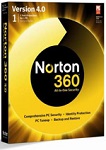 Norton 360 - Free download and software reviews
2,104
Norton 360 - Free download and software reviews
2,104
 HomeGuard (64-bit) - Free download and software reviews
2,256
HomeGuard (64-bit) - Free download and software reviews
2,256
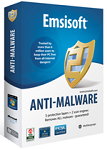 Emsisoft Anti-Malware Free (Previously A-squared Free) - Free download and software reviews
1,887
Emsisoft Anti-Malware Free (Previously A-squared Free) - Free download and software reviews
1,887
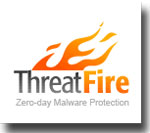 ThreatFire AntiVirus Free Edition - Free download and software reviews
2,445
ThreatFire AntiVirus Free Edition - Free download and software reviews
2,445
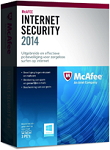 McAfee Internet Security - Free download and software reviews
2,158
McAfee Internet Security - Free download and software reviews
2,158
 Panda USB Vaccine - Free download and software reviews
2,960
Panda USB Vaccine - Free download and software reviews
2,960
 System Surveillance Pro - Free download and software reviews
2,916
System Surveillance Pro - Free download and software reviews
2,916
 Google Chrome Free...
166826
Google Chrome Free...
166826
 MathType 6.9a -...
79616
MathType 6.9a -...
79616
 Zalo for PC
29555
Zalo for PC
29555
 Beach Head 2002 -...
25741
Beach Head 2002 -...
25741
 iBackupBot - Free...
22604
iBackupBot - Free...
22604
 AnonymoX 2.0.2 -...
22190
AnonymoX 2.0.2 -...
22190
 Snipping Tool++...
20864
Snipping Tool++...
20864
 Age of Empires 1.0
17050
Age of Empires 1.0
17050
 Realtek AC97 Audio...
16520
Realtek AC97 Audio...
16520
 Citrio...
14560
Citrio...
14560